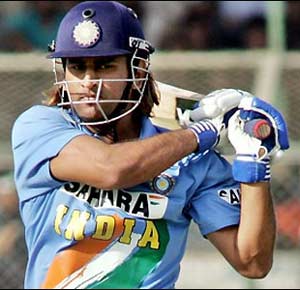 Indian cricket and it’s batters have been summarily bounced into a very uncomfortable corner in this edition of the ICC Twenty20 in the West Indies.
Indian cricket and it’s batters have been summarily bounced into a very uncomfortable corner in this edition of the ICC Twenty20 in the West Indies.
Without the core batters, Sachin Tendulkar, Virender Sehwag and Rahul Dravid who have games that can not only survive against good quick bowling, but positively thrive on it, their young batters have looked bereft of game plan or technique.
The big three aren’t in the Windies for various reasons, those who are, have games that have been left looking very porous.
The Indian media have been quick to pick up on the success of their young players in the Indian Premier League and compare it to the lack of success in the West Indies.
The IPL format of 20 20 cricket is a long way from this international competition. Not only is it being played on surfaces, particularly Barbados, that are a world away from the the slow, low batting wickets of India.
Secondly, the international attacks have up to three or four genuine quick bowlers who can exploit the conditions, there has been no respite for the batters, no where to hide.
I put my hand up, I thought that the competition would favour the sides from the subcontinent, the tracks in the carribean have been slow and low in recent memory and I thought that would be to the Asian sides advantage.
Then came Barbados, with fantastic bounce, good pace and carry. A place for batters with a back foot game to enjoy themselves.
Australia and England have enjoyed it, although it remains to be seen whether they capitalize on this and it is significant as they move into the semi finals.
Getting back to the Indian batters, this is not a new question that Indian cricket has been asked, it is not a question that they have adequately answered though.
The press have been up in arms, who is to blame for this.
Is it Gary Kirsten’s fault ? Have they been prepared properly? What should M.S.Dhoni be doing about it? These are all questions that will be chewed over.
So what is the answer?
Kirsten and Dhoni are not at fault here, the long term strategic planning of the BCCI in its preparation of its young players is at the core of this issue.
At the heart of this is the old question of whether this is about the mental game or cricket technique.
It is in fact, about both.
The players games are shaped by the wickets they grow up playing on, their games evolve around the environment and are shaped by this, so in India the game is predominantly about slow, low, spinning wickets. That is not the batters fault, that is just the reality in the subcontinent.
How then can the BCCI put measures in place so that the best young batters in India can become accustomed to playing pace and bounce? So that when touring, they have the necessary game plans and skills to thrive away from home.
Particularly in Australia and South Africa that have quick wickets, with a fast bowling culture.
Simply put, they need to have a strategic plan with the long term goal of equipping players to be able to play quick bowling on hard, bouncy wickets.
If it is not part of the natural conditions then it needs to be artifically simulated.
The brain will adapt to the simulation it is provided with, so by creating this artificially, on artificial wickets at the Indian Cricket Academy, the best young players can experience and begin to develop the skills and game plans for back foot cricket.
This then becomes a training protocol at all the strategic cricket centres around India, these will be the designated hubs of first class cricket that have the facilities and coaching infra-structure to roll this out.
Junior players across the country can be coached in a co-ordinated manner and the best players identified. Resources, such as best practice models are utilised, for example, how Sachin Tendulkar and Rahul Dravid have constructed game plans to thrive in Australia.
So their game plans are taken and practiced, broken down, studied and personalised for the individual. The young players are allowed to engage their own brains and think through the what, how and why of making them work and why they have been successful for Tendulkar and Dravid?
The goal is to allow the player’s brain to experience speed, to begin to develop new wiring, new connections associated with successfully playing fast bowling, utilising models of excellence from their own culture.
Another simple batting tip for clubs and schools is to shorten the length of the wickets that are practiced on, this can be done on turf and artificial wickets.
This speeds up reaction time significantly for the batters, it also allows the coaches to see who has the necessary gift of processing visual information quickly and enjoys the challenge of playing fast bowling. This can be done against bowlers and the bowling machine.
The key is to do it incrementally, allow the batters brain to become accustomed to the speed, beginning slowly and then increasing the speed threshhold, keeping it safe, but challenging.
Confidence is critical here, we want to wire this into the players brain as a positive experience, so by beginning slowly, they can make the adjustments at their own pace and become confident at one stage, and then move to the next.
Time spent with players devising game plans and then simulating them is time well spent. It is too late to arrive in the West Indies and hope that players are going to adapt, it needs to be wired into players when they are young and then repeated over and over again, so that it runs on automatic in game time.
Players who have to consciously think about how to play the short ball in the middle of a match, with Dale Steyn running in bowling 90 mph (150 kph) are in trouble.
Then, and only then, will India develop a batting culture that is consistently prepared for fast bowling and thrives upon it.

About Richard Pybus
I'm Richard Pybus, I've coached Pakistan, Bangladesh, Middlesex, Titans and the Cape Cobras in South Africa and the goal of this site is to help you to play winning cricket.
